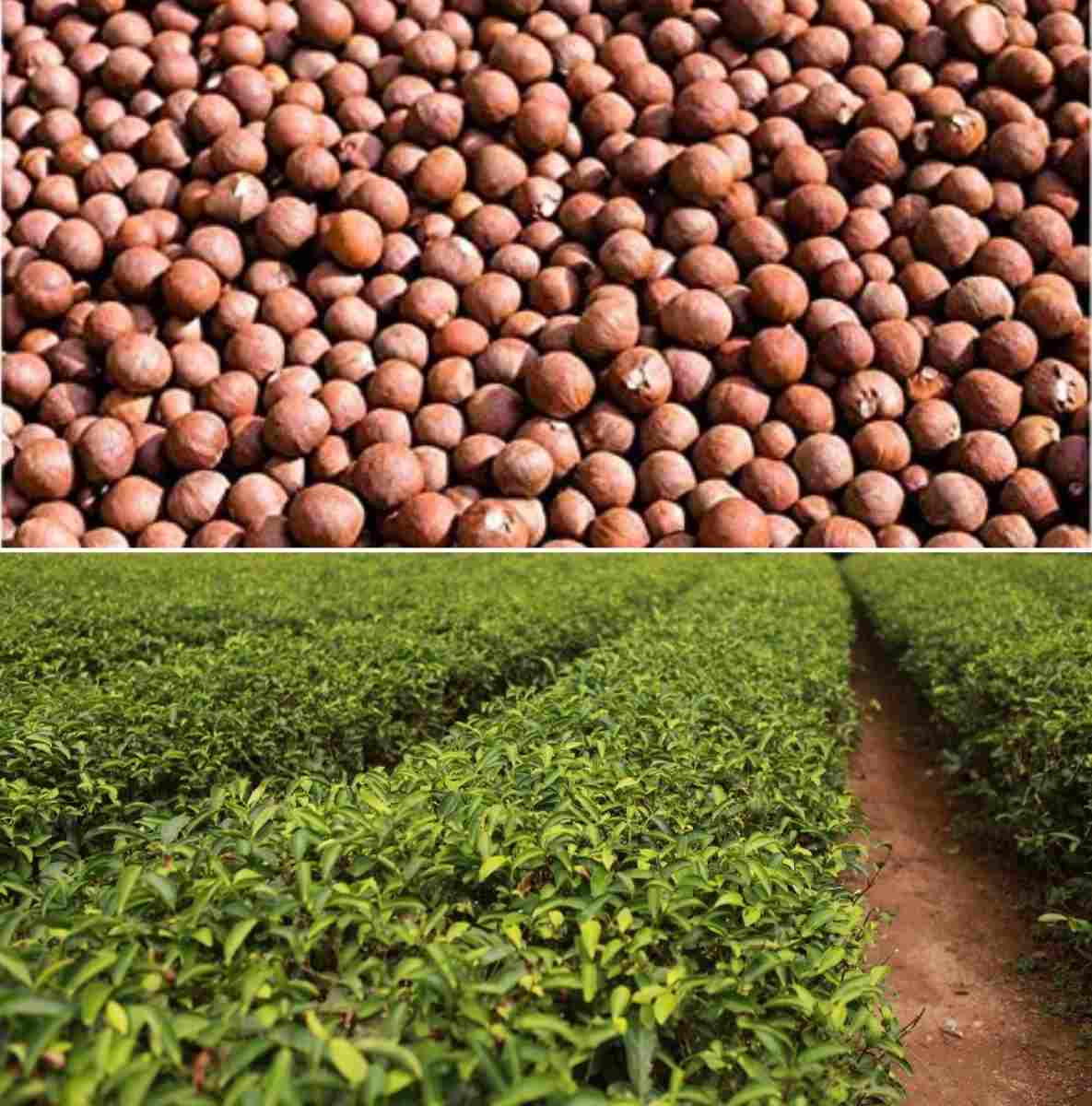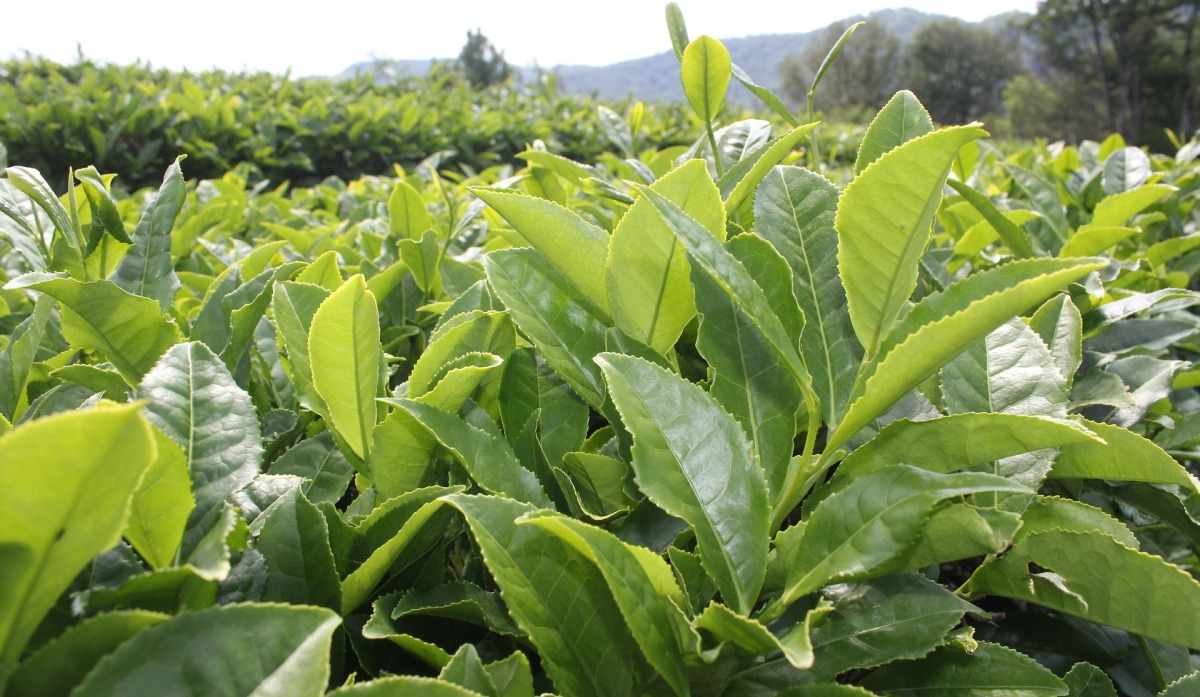Introduction to Tea seed germination
Tea (Camellia sinensis) is one of the most economically essential beverage crops all over the world and is also considered to be the national drink. Though, due to the uprooting of old seed plantations in different parts of the country; conservation of valuable Tea germplasm in the form of Tea seeds has assumed considerable importance. The Tea plant produces seeds for several months every year. These seeds are used to propagate new Tea plants. All Tea (whether green, black, white, or oolong) originates from Camellia sinensis plants-the the processing is what makes the different types of Teas.
A step by step guide to Tea seed germination procedure
The propagation of Tea plants from seeds is not difficult. Only freshly harvested seeds must be used as older seeds lose their moisture, and therefore their viability, the longer they are stored. Tea seeds can be pressed to make incredibly healthy oil. Tea grows in a moderately hot and humid climate, which is preferred for better crop yield, crop distribution, and quality. An ambient temperature within 13°C and 28 to 32°C is conducive to the growth of Tea. The temperature range above 32°C is unfavorable for optimum photosynthesis. Tea is synergically disastrous for the crop if it is accompanied by low humidity.

In India, the temperature level in winters is around or below 12°C and there is hardly any growth during this period. This is known as Winter Dormancy. Flushing in the Tea plants starts from March with a rise in temperature level. The Acidic Soil with around 4.5-5.5 pH level is most suitable for Tea.
Tea seed development
The physiological process of seed development can be divided mainly into three phases. Pollination initiates the first phase of the formation of the embryonic axis followed by the second phase of seed expansion when both fresh and dry weight increase at a rapid rate due to the accumulation of different reserve materials. In the third phase of seed maturation, accumulation of reserves slows down
Why grow Tea from seed?
Tea seed is convenient
The average diameter of a viable Tea seed is a little more than one-half of an inch or about 12 millimeters. Tea seeds have a tough outer coat that can endure a course of “shipping and handling.” Because of their small size and impressive durability, and thousands of seeds can be conveniently packed into a small box and mailed around the world.
If properly stored in refrigeration, Tea seed can remain viable for several months after harvest. The convenience of storability, in turn, gives the grower a measure of flexibility for the timing of planting and the number of Tea seeds to germinate.
Tea seed is genetically diverse
No two seeds are genetically exactly alike. This is very important because even “sibling” seeds that share the same parent plants (Tea camellia does not self-pollinate) may have alternative gene combinations that differ in performance. For instance, some genes can confer resistance to disease while others enhance cold hardiness. Planting out Tea seedlings may thereby reduce the risk of losing an entire Tea estate to blights and stresses.
Information about Tea seed
Tea seed is of spherical structure flattened slightly on the side of the eye (hilum). Generally, one seed developed per locule. But sometimes two or more seeds can develop in the same locule. Tea seed developed from the same locule bear flat or concave surface. Measurement with slide calipers shows that of all sizes of the seed, the greater diameter is a linear function of the lesser diameter. Different seed basis can be distinguished on the same basis of the proportion of large and small-seeded trees found that the improper manuring of orchards increased the proportion of small Tea seeds. Though, data available showed that nutrients did not have an appreciable effect on the genetic difference between trees bearing large and small seeds. Thus, it is clear that the variation in seed size of a seed stock is primarily due to the varied genetic constituents. Though, seedling size is dependent upon the size of the seed. So, small seeds produce smaller seedlings and vice-versa. It does not mean to eliminate all the smaller Tea seeds of a seed bari (it is a standard source of Tea tree used exclusively for seed production i.e. Orchard). Instead, standard seed size is maintained by the Tea planters and the maximum germination appears to be associated with the seed of that size which occurs most frequently in a seed bari. At the same time, it has been suggested by different workers that the absolute size of seed was not the deciding criteria for rejecting small seeds. The effect of Tea seed size on the growth of Tea seedlings. Results showed that up to one year stage, the bigger Tea seeds developed better seedlings than the smaller ones. Though, large-sized seeds produced better seedlings in respect of plant height, stem diameter, the weight of shoots, and roots in all studies. After 3 years, the differences were not significant. The amount of food reserve in the Tea seed is an important factor for the early growth of the seedlings.
How to find the best Tea seed for germination
Get a guarantee – Only exchange cash with Tea seed retailers who offer a money-back guarantee.
Purchase fresh seed – Tea seed ripens between September and December. Get the seller’s assurance that you are purchasing Tea seeds harvested during these months and within the same season that you intend to plant. Once received, your seeds will keep, sealed in plastic bags, for up to 2 months under refrigeration.
Anticipate seed viability – Since you know in advance that only fifteen percent of unscreened seeds will make robust seedlings, and then you can plan accordingly. For example, if you want to install 50 Tea plants, then solve for the number of seeds needed [50 = (N)(0.15)], or [N = 50/0.15 = 330 unscreened seeds].
Tea seed germination time
Tea seed germination may take up to 6 to 8 weeks.
Conditions for Tea seed germination
In case if you miss this: Coffee Seed Germination, Conditions, Sowing Procedure.

- Tea plants grow well in warm, humid environments, so if you reside in an area that gets cool weather in the winter and you are planning on growing outdoors you’ll need to move them inside during times of cold temperature levels. If you have, or can set up a greenhouse area, where you can control the temperature, moisture, and light you must have no problem at all with the growing process regardless of the climate in your region.
- Germination may take up to 6 to 8 weeks, and as the plants first begin to grow they must have some shade and aren’t overexposed to the sun to ensure that the young plants don’t dry out. As your Tea plants begin to develop and their roots become stronger, you can gradually allow them to be exposed to more sunlight. If you are growing in a controlled environment, 12 hours of light per day is ideal as your plants begin to reach maturity.
- Regular watering is essential as the roots of Tea become established, approximately two times a week is usually sufficient and rather than just soaking the soil you could mist the entire plant during watering.
- Grow Tea plant in a well-drained and sandy soil that is slightly on the acidic side. A typical Tea plant will make several thousand Tea leaves per year. If you are planning on growing your Tea plant indoors, you’ll want to prune it so that it doesn’t outgrow its environment. Tea plants can flourish in small areas, but without trimming they will continue to grow and can reach more than 2 meters in height which may be a bit tall for some environments.
- Tea seeds are relatively easy to grow and if you are not planting right away, store the Tea seeds in a refrigerator. Tea seeds left at room temperature will rapidly lose moisture and less viable. Then, soak the seeds in water overnight before planting.
- Place Tea seeds in a plastic Ziploc bag with a moist paper towel and the seeds will split when ready to plant in soil.
- Plant the seeds in a small pot or seed starting containers, and cover with approximately 2.5 cm (1 inch) of soil. Water frequently by misting to keep the soil moist, but not soaked and a misting spray bottle works well. Place the plants in a shaded area until the seeds begin to sprout, and then gradually move outdoors into the sunlight. If using grow lights inside or in a greenhouse, make sure the plants receive approximately 12 to18 hours of light. Water approximately 2 times per week in the first year as the roots become established.
Propagation of Tea seeds
First, soak Tea seeds in water for between 24 and 48 hours. This allows the Tea seeds to absorb as much water as it can and help to kick start the germination process. In general, the Tea seeds that sink give the highest chances of successful germination, although this is by no means guaranteed.
Once removed from the water, put in a seed tray in a warm, sunny position and spray to keep damp. Allow the seeds to come back to air temperature and cover over with an inch of coarse vermiculite.
How to germinate Tea seeds
- Keep the soil moist and in a warm, sunny position, hopefully, germination will occur 6 to 8 weeks later. Once germination of Tea seeds has occurred and the Tea plants have developed 3 or 4 leaves, it is time to separate them into pots using ericaceous compost.
- Move to a warm, but partially shaded position, spray regularly to maintain the soil moist but not wet. Tea plants are most commonly propagated using vegetative propagation methods such as cuttings, but they will grow dependably from fresh seeds. The Tea seeds germinate fairly quickly once sown in the warm, moist medium; however, they should be scarified before sowing to weaken their hull and ease sprouting.
- Gather Tea plant seeds in mid- to late autumn when the Tea seed capsules ripen to a solid, reddish-brown color and begin to split open. A crack opens the capsules and removes the round, pale brown seeds.
- Put the Tea plant seeds in a deep bowl. Boil water in a pan, and then remove it from the heat. Pour the just-boiled water over the Tea plant seeds and soak them for 24 hours to soften the outer hull. Discard any seeds that float on the surface as they are likely rotten or hollow.
- Spread the soaked Tea seeds on a dish towel in a sunny area. Mist the seeds with water every few hours so they never fully dry out and inspect the seeds in a day or two. Collect those with a crack in the hull and sow immediately.
- Sow the Tea seeds in individual 4-inch greenhouse pots filled with a mix of one-half potting soil and one-half perlite or vermiculite. Sow the Tea seeds at a depth of 1 inch. Make sure the pale spot, or eye, on the end of the Tea seed, is positioned horizontally.
- Set the potted Tea seeds inside a shaded cold frame on a germination mat. Set the temperature on the germination mat to between 70 and 75F. Do not lower the temperature at night and drape a sheet of plastic wrap over the pots to hold the warmth around the seeds.
- Keep the growing medium moderately moist and allow the top 1/2 inch to dry out before adding more water to prevent rot. Then, add water until it begins to trickle from the base of the pot.
- Look for signs of germination in 1 to 2 months. Remove the plastic wrap after sprouts emerge, but keep the germination mat in place for another 2 weeks to encourage fast growth.
- Transplant the Tea plant seedlings into 8-inch pots filled with potting soil once they produce 2 sets of mature leaves or four leaves total. Move the pots to a sheltered area under the light shade with morning and late afternoon sun.
- Grow the Tea plants under light shade for 2 to 3 months, or once they grow to 1 foot in height. Then, provide an inch of water weekly. Acclimate the shrubs to direct sun over 7 to 10 days in early autumn.
- Then, transplant the Tea plants into a permanent bed with acidic, consistently moist soil in the fall after the first rain. Space them at least 15 feet apart and provide light shade during the shrub’s first summer in the ground to prevent stress.
How to plant Tea seeds
You should not miss this: Hydroponic Drip System, Types, Advantages.

Plant the Tea seeds whose hulls have cracked in a well-draining potting medium, half potting soil and half perlite or vermiculite. Bury the Tea seed about an inch (2.5 cm.) under the soil with the eye (hilum) in a horizontal position and parallel to the soil’s surface. Keep the seeds uniformly moist but not sodden in an area with temperatures that are consistently 21-24C or atop a germination mat. Then, cover the germinating Tea seeds with plastic wrap to retain moisture and warmth. The germinating Tea seeds must show signs of growth within a month or two. When sprouts begin to appear, remove the plastic wrap. Once the emerging seedlings have 2 sets of true leaves, Tea plant seed propagation has completed and it’s time to transplant them into larger pots. Move the transplanted Tea seedlings into a sheltered space and light shade but with some morning and late afternoon sun as well. Keep growing Tea plants from seed under this light shade for another 2 to 3 months until they are about a foot in height. Harden off the plants for a week in the fall before transplanting them outside and space the seedlings at least 15 feet apart in moist, acidic soil. To prevent the trees from stress, give them light shade during their first summer. If you live in a cool climate, then you can grow the Tea plants in containers.
In case you are interested in this: How to Make Money from Tea Stall Business.